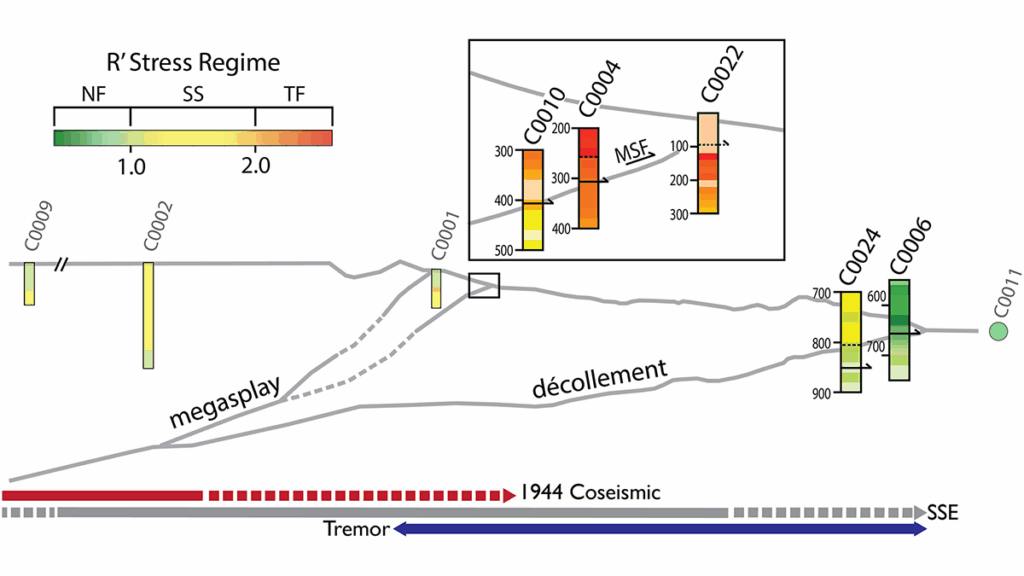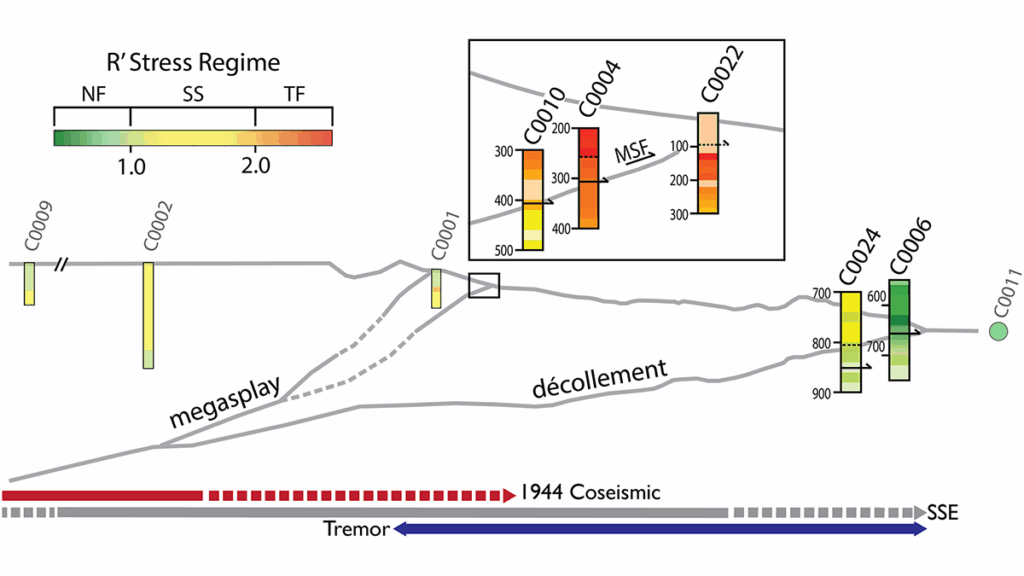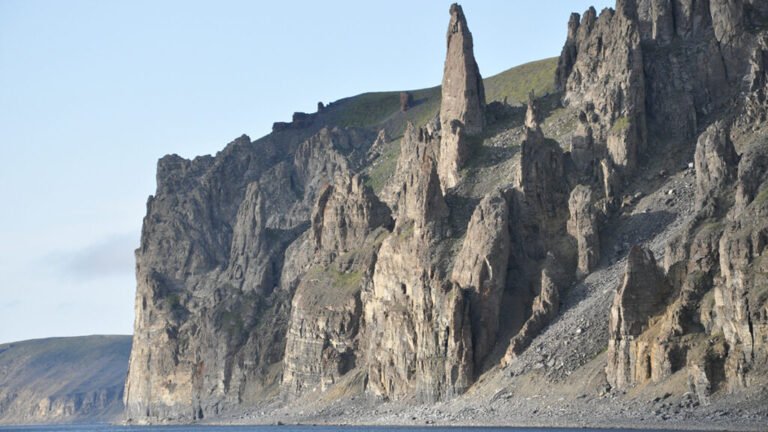

Editors’ Highlights are summaries of recent papers by AGU’s journal editors.
Source: Journal of Geophysical Research: Solid Earth
The Nankai subduction zone, in southern Japan, has hosted several magnitude 8+ earthquakes over the last 300 years, including the 1707 magnitude 8.7 Hōei earthquake, which, until the 11 March 2011 magnitude 9.0 Tohoku-Oki earthquake occurred, was the largest historical earthquake in Japan. The most recent (large) earthquakes in the region were the 1944 magnitude 8.1 Tōnankai Earthquake, followed by the 1946 M8.1 Nankaido Earthquake. Under our current knowledge, the return period of these earthquakes is thought to be approximately 100-150 years.
As a consequence, the Nankai subduction zone is arguably the best instrumented and most extensively studied subduction zone in the world. An important part of this effort has been the Nankai Trough Seismogenic Zone Experiment (NanTroSEIZE), a major project of the Integrated Ocean Drilling Program (IODP). NanTroSEIZE has spent over a decade drilling, sampling, imaging, and instrumenting this margin to observe and understand the seismogenic and tsunamigenic behavior of an active subduction plate boundary system.
Stress being the driver of faulting, Schaible and Saffer [2025] use data from borehole breakouts, a technique routinely used to infer underground stresses, observed during the NanTroSEIZE experiment. Their analysis focuses on two regions that penetrate major faults along the Nankai Trough: a major out of sequence thrust fault located about 25 kilometers landward of the trench, termed the megasplay (IODP Sites C0004, C0010, and C0022), and the décollement within a few kilometers of the trench (Sites C0006 and C0024).
Their results suggest that while the toe of the prism is understressed, the megasplay fault is near failure. This single result has important consequences for possible mechanical scenarios of how a megathrust earthquake could rupture up-dip all the way to the seafloor surface and, in consequence, on the possible scenarios of earthquake related tsunami generation for southern Japan.
Citation: Schaible, K. E., & Saffer, D. M. (2025). State of stress across major faults in the Nankai subduction zone estimated from wellbore breakouts. Journal of Geophysical Research: Solid Earth, 130, e2024JB030242. https://doi.org/10.1029/2024JB030242
—Alexandre Schubnel, Editor-in-Chief, JGR: Solid Earth
Text © 2025. The authors. CC BY-NC-ND 3.0
Except where otherwise noted, images are subject to copyright. Any reuse without express permission from the copyright owner is prohibited.


